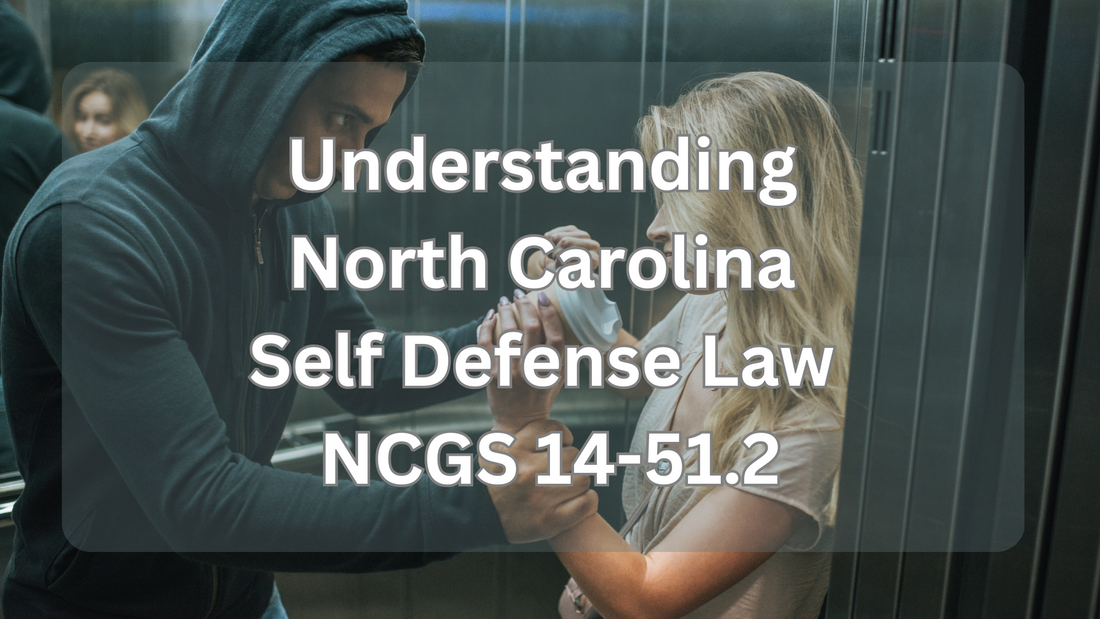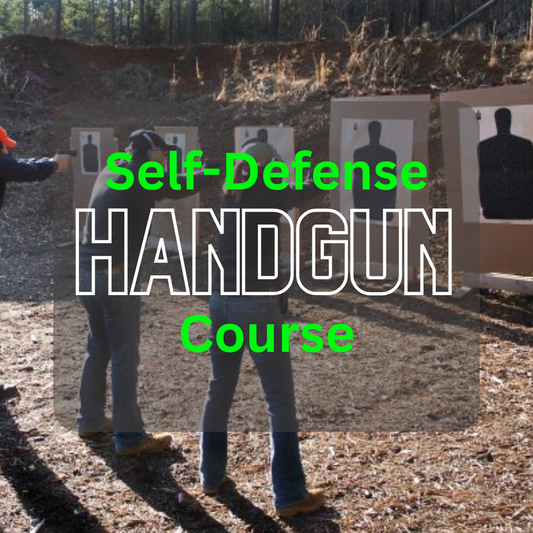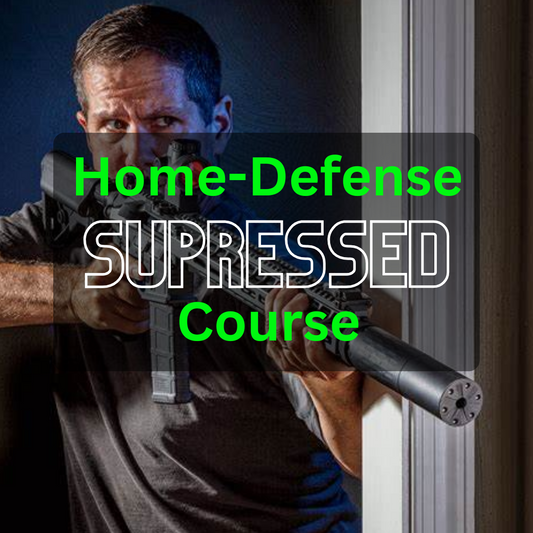
Have you ever wondered about your rights and options regarding self-defense in the state of North Carolina? Well, today is your lucky day! In this blog post, we will delve into the topic of North Carolina General Statute § 14-51.2 and explore its significance in self-defense law.
You might ask yourself why NCGS § 14-51.2 is essential. This particular statute is designed to provide individuals in North Carolina with a clear understanding of their rights and responsibilities regarding self-defense. By familiarizing ourselves with the provisions outlined in this statute, we can empower ourselves to make informed decisions in critical situations.

I invite you to join me on this and many other educational journeys with Trace Armory Group, where we navigate the complexities of self-defense law and arm ourselves with the knowledge needed to protect ourselves and our loved ones. Whether you are a seasoned firearms enthusiast or a beginner seeking to learn more about your rights, this blog post will provide valuable insights and guidance.
We must start here to understand the body of work we are working with. Section (a) provides crucial definitions that form the basis of understanding this statute.
Definitions- Home: According to § 14-51.2(a)(1), a home refers to any dwelling, residence, or place temporarily or permanently occupied by a person. It encompasses both owned properties and rented accommodations, emphasizing the importance of personal safety within one's living space.
- Law Enforcement Officer: As defined in § 14-51.2(a)(2), a law enforcement officer refers to an individual employed by a governmental agency and has the authority to make arrests. This definition helps establish the boundaries of the statute's application to encounters involving law enforcement personnel.
- Motor Vehicle: Section 14-51.2(a)(3) defines a motor vehicle as a self-propelled vehicle designed to transport persons or property on a highway. This definition highlights the significance of vehicular defense situations, given that motor vehicles are a familiar setting for potential threats.
- Workplace: Lastly, § 14-51.2(a)(4) defines a workplace as any location where an individual works for an employer, whether an office, construction site, or other work-related environment. This definition emphasizes the need for individuals to feel secure in their places of employment, especially when faced with potential threats.
NCGS § 14-51.2 clarifies when defensive force can be used lawfully, providing a framework for understanding the relevant circumstances. It helps individuals understand where they can legally protect themselves and others. These definitions form the basis for a more detailed examination of § 14-51.2. The following sections will explore this statute's presumptions, exceptions, and other essential elements. Stay tuned as we explore North Carolina General Statute § 14-51.2, gaining the knowledge for responsible and practical self-defense.

When it comes to self-defense, NCGS § 14-51.2 provides a crucial provision regarding the presumption of fear of death or serious bodily harm for lawful occupants using defensive force. This presumption, outlined in section (b) of the statute, is a significant protection for individuals defending themselves or others. Let's dive into the details:
Under section (b), two conditions must be met for the presumption of fear to apply.
- Firstly, the person using defensive force must be in a place where they have a lawful right to be. This condition ensures that individuals are not penalized for self-defense within their homes, workplaces, or motor vehicles. It recognizes the fundamental right of lawful occupants to protect themselves and their property.
- Secondly, the person using defensive force must have a reasonable belief that an intruder or attacker intends to inflict death or serious bodily harm upon them or others present in the exact location. This condition underscores the importance of having a genuine and reasonable fear for personal safety when resorting to defensive actions.
It is essential to understand that to use defensive force, there must be a belief based on an imminent threat. This means there must be a clear and immediate danger that a reasonable person would perceive in the same situation. This requirement emphasizes the need to carefully assess the situation and ensure that the use of force is both necessary and proportional. Additionally, the level of defensive force used must match the level of threat faced. North Carolina law recognizes the concept of proportional force, which means that the force used in self-defense should directly correspond to the threat encountered. This ensures that individuals do not use excessive force in response to a perceived danger, which could lead to legal consequences.
Acknowledging the concept of "disparity of force" is vital – recognizing that not all physical confrontations are equal. While many self-defense laws don't explicitly mention age, it significantly impacts the threat level in altercations. For example, an 85-year-old woman punching someone presents a different scenario than a 25-year-old fit male doing the same. Despite this, legal frameworks often overlook such nuances. Age plays a crucial role in determining one's capacity for harm, and failing to consider it can lead to unjust outcomes. By recognizing age as a factor in assessing the disparity of force, we can ensure that self-defense laws reflect the complexities of real-life encounters, promoting fairness in evaluating the use of force.
Section (b) creates a presumption that affords valuable protection to individuals involved in a self-defense situation. It acknowledges that individuals who are legally occupying a space should not be expected to hesitate when their safety, or the safety of others, is at risk. By establishing a presumption of fear of death or serious bodily harm, this statute helps develop a legal framework that supports the right to self-defense. However, it is essential to understand the responsibilities that come with this presumption. Individuals must have a reasonable belief in an imminent threat and be aware of the potential consequences of using force that could cause serious harm. This reinforces the importance of proper training, having knowledge of the applicable law, and making informed decisions, particularly in high-pressure situations.
It's crucial to understand that your right to use deadly force exists within a specific moment – a critical distinction often overlooked in discussions about self-defense. Simply put, this means that the legality of your actions hinges on an imminent threat.
Consider this scenario: you're facing a potentially life-threatening situation, and at that moment, you believe your only recourse is to use deadly force to protect yourself or others. However, as the situation evolves, so does your legal justification for using such force.
For instance, if the threat suddenly dissipates – perhaps the assailant turns and starts to flee – your right to employ deadly force evaporates. In other words, the legality of your actions is contingent on the immediacy of the threat. Once that threat diminishes, so too does your legal justification for using lethal force.
This underscores the importance of discernment and restraint in self-defense situations. While you may initially perceive a threat that warrants lethal action, it's imperative to reassess the situation continuously and respond proportionately. Failing to do so can have severe legal consequences, as your right to use deadly force is intrinsically tied to the presence of an imminent threat.
In essence, the legality of self-defense hinges on the dynamics of the moment – with each passing second, the justification for employing lethal force may shift. Understanding this principle is essential for navigating self-defense scenarios responsibly and within the bounds of the law.
You might be asking your self, "how do I handle such a rapid situation? Please read my article on "Mastering the OODA Loop: A Strategic Approach to Self-Defense".
Circumstances Where the Presumption Does Not ApplyWhile North Carolina General Statute § 14-51.2 establishes a presumption of fear of death or serious bodily harm for lawful occupants using defensive force, there are circumstances where this presumption does not apply. These exceptions, outlined in section (c) of the statute, highlight situations where individuals cannot rely solely on the presumption to justify their use of force. Let's take a closer look:
- One of the primary circumstances where the presumption does not apply is when the person against whom the defensive force is used has a right to be in the home, motor vehicle, or workplace. For example, if two roommates get into a heated argument, and one uses a firearm against the other, the presumption would not apply if both individuals had an equal right to be in the residence.
- Additionally, if the individual using defensive force is engaged in criminal activity or attempting to commit a forcible felony, the presumption does not apply. This exception ensures that individuals cannot use the presumption as a defense if they commit illegal actions.
- Another scenario where the presumption does not apply is if the individual using defensive force is a law enforcement officer or a bail bondsman executing their official duties. Recognizing that these individuals operate within a different legal framework than civilians when using force is vital.
It is crucial to understand these exceptions and their implications thoroughly. While the presumption outlined in subsection (b) provides valuable protection for individuals in certain situations, it is not a blanket defense for all actions involving defensive force.

Section (d) establishes an essential presumption regarding a person's intent to unlawfully enter a home, motor vehicle, or workplace. According to this provision, there is a presumption that an individual unlawfully entering such premises intends to commit an unlawful act involving force or violence. Let's delve into the significance of this presumption and its role in justifying the use of defensive force:
The presumption recognizes the inherent danger posed by someone unlawfully entering another person's home, motor vehicle, or workplace. By assuming that the intruder intends to commit an unlawful act involving force or violence, the law acknowledges the potential threat to the lawful occupant's safety and well-being. This presumption is crucial in justifying the use of defensive force. Suppose a person finds an intruder unlawfully inside their residence, vehicle, or workplace. In that case, the presumption of the intruder's intent to commit an unlawful act involving force or violence helps support the lawful occupant's decision to defend themselves or others present.
However, it is essential to note that this presumption is not absolute and can be rebutted by evidence to the contrary. The lawful occupant still needs to evaluate the circumstances and ensure that the defensive force is reasonable and proportional to the threat faced. While the presumption of intent of unlawful entry is a powerful tool for individuals protecting themselves and their property, it is not a free pass to use excessive force. The lawful occupant must still act responsibly and only use the force necessary to neutralize the threat. Understanding and embracing this presumption is essential for individuals navigating self-defense situations. It provides a legal basis for taking defensive measures against intruders who unlawfully enter their homes, vehicles, or workplaces, reinforcing the fundamental right to protect themselves and others from harm.

Section (e) provides important protections for individuals using defensive force. This provision establishes that a person using force as permitted by this section is immune from civil or criminal liability for using such force. This immunity from liability is an essential component of North Carolina's self-defense law, helping to ensure that individuals can protect themselves and their loved ones without fear of legal repercussions.
However, it is essential to note that this immunity does not extend to law enforcement officers or bail bondsmen acting in the lawful performance of their duties. These professionals operate within a different legal framework when using force and are held to a different standard.
Duty to RetreatSection (f) establishes a necessary provision regarding the duty to retreat. Specifically, this section ensures that a lawful occupant within their home, motor vehicle, or workplace has no duty to retreat from an intruder in the circumstances covered by this section. This provision recognizes the fundamental right of individuals to defend their homes and loved ones, even if it means using force. This section removes a significant barrier that could deter individuals from protecting themselves or others in their care by establishing that a lawful occupant has no duty to retreat.
It's crucial to grasp the specific circumstances where no imminent threat of death or severe harm exists; in such cases, disengagement can effectively prevent escalation. Some individuals perceive the absence of a duty to retreat as a license to escalate. The mere presence of an armed victim can turn a tense situation deadly. However, I see the absence of a duty to retreat as enabling individuals to maintain a defensive stance, reacting to others' actions without feeling pressured to choose between action and inaction.
The duty to retreat provision outlined in § 14-51.2(f) ensures individuals can act in self-defense without fear of legal repercussions, provided they face a credible and tangible threat. Nonetheless, individuals must exercise caution and responsibility, employing only the necessary force to neutralize the threat.
To learn how to decipher what is a credible and tangible threat, read my other blog The Principles of Ability, Opportunity, and Jeopardy (AOJ)
Conclusion
In this blog post, we explored the critical provisions outlined in North Carolina General Statute § 14-51.2 about self-defense and using force in certain circumstances. Let's summarize the key points discussed:
- Intent of Unlawful Entry: Section (d) establishes a presumption that a person unlawfully entering a home, motor vehicle, or workplace intends to commit an unlawful act involving force or violence. This presumption justifies the use of defensive force in these situations.
- Immunity from Liability: Section (e) grants immunity from civil or criminal liability for a person using force as permitted by § 14-51.2. However, this immunity does not extend to law enforcement officers or bail bondsmen acting in the lawful performance of their duties.
- Duty to Retreat: Section (f) removes the duty to retreat for a lawful occupant within their home, motor vehicle, or workplace when facing imminent death or serious bodily harm.
Understanding and familiarizing ourselves with the provisions of § 14-51.2 is crucial for personal safety and self-defense in North Carolina. By recognizing the intent of an unlawful entry, individuals can respond to threats appropriately and take necessary measures to protect themselves and their loved ones. Furthermore, immunity from liability ensures that individuals can exercise their right to self-defense with confidence, knowing they are protected from legal repercussions when using force as the law allows. Finally, the duty to retreat provision provides individuals with the assurance that they can defend themselves without first attempting to retreat in situations that may be impractical or unsafe.
As we continue to share knowledge and foster a safe learning environment, we aim to provide comprehensive information to firearms enthusiasts and self-defense practitioners in North Carolina. By staying informed about the specific provisions and their applications, individuals can confidently navigate self-defense situations within legal boundaries.
We look forward to exploring further topics related to self-defense, firearms, and personal safety, ensuring we provide valuable insights and resources to empower individuals to protect themselves and their loved ones. Please give us a follow on Trace Armory Group's Facebook Page.
John Boyette





